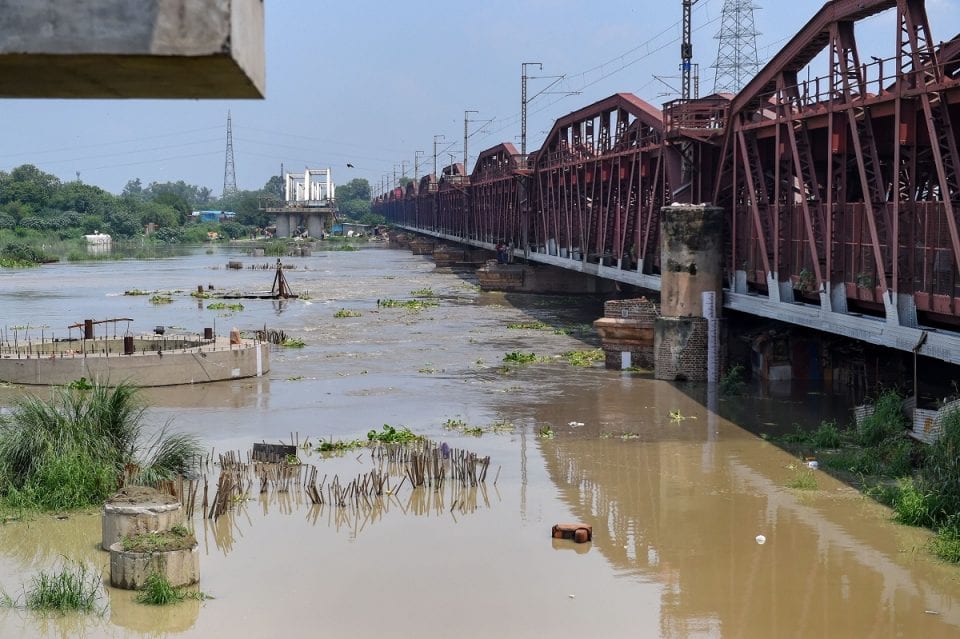
Cabinet clears new dams Lakhwar, Renukaji to meet Delhi's water needs

The new dam projects, Lakhwar and Renukaji, which has been approved by the Union cabinet for 90 per cent central funding last week, will not just be critical to meet Delhi’s water supply needs but it will also result in the “rebirth” of the Yamuna river, one of the most polluted rivers in the country.
This statement was made by Jal Shakti minister Gajendra Singh Shekhawat to mediapersons after the cabinet meeting, in which the long-pending projects were cleared under the Pradhan Mantri Krishi Sinchayee Yojana (PMKSY) during the 2021-26 period.
The Lakhwar project is supposed to be constructed on river Yamuna in Uttarakhand, and Renukaji on river Giri in Himachal Pradesh. Identified as national projects in 2008, 90 per cent funding of the cost of irrigation and drinking water component will be provided by the government of India as central assistance and the rest 10 per cent cost of the irrigation and drinking water component will be borne by the beneficiary states.
The two projects would benefit six states of the upper Yamuna basin, augmenting water supply to Delhi as well as Himachal Pradesh, Uttarakhand, UP, Haryana, and Rajasthan and a major step towards rejuvenation of Yamuna.
Shekhawat told reporters at the press briefing that these two projects will work as a permanent solution to the problem of pollution in Yamuna.
Also, he said that just as in the case of Ganga, all dam holding stakeholders had been notified that they have to discharge a particular quantum of water in non-monsoon months. On the same lines, the government will make it mandatory for some amount of water to flow into Yamuna as well, he said, pointing out that when water will flow and if effluent treatment plants are working, then fresh and treated water both will improve Yamuna water quality.
Also read: Water supply in Delhi disrupted as ammonia rises in Yamuna
Commenting on the high levels of pollution in the over 1,300 km long Yamuna, Shekhawat said just two per cent or 22 km of Yamuna falls in Delhi but 98 per cent of pollution in Yamuna comes from Delhi. He blamed Delhi for releasing untreated or semi-treated industrial effluents or sewage into the river in this 22 km stretch.
Shekhawat said though the Delhi government keeps blaming Uttar Pradesh and Haryana governments for the pollution of Yamuna, in reality, Delhi’s effluent treatment plants are inadequate and the sewage treatment plants also have to be upgraded by the city government.
The minister put the onus on the Delhi government and criticised them for not taking the responsibility since water is a state subject and is the responsibility of the state. He pointed out that the Centre was actually doing the state’s job by working on the rejuvenation of Yamuna.
“For any project, the Centre can give technical or financial assistance. Ultimately conceiving a project, augmenting it, implementing it and operating and maintaining it is the responsibility of the state. The Delhi government has absolutely failed in that,” said Shekhawat, according to reports. According to him, projects conceived in 2012 were still not completed since it takes three years for the Delhi government to complete the tendering process itself.
The Lakhwar and Renukaji Dams
The Lakhwar multi-purpose project, known as the “tallest dam” across the Yamuna river in Uttarakhand, will be constructed at a height of 204 metres. With its live storage capacity of 330.66 MCM, the dam aims to provide irrigation benefit to 33,780 hectares and 78.83 million cubic metres of drinking and industrial water supply for six basin states. The 300 MW project will straddle Dehrudun and Tehri districts with its 22-km-long reservoir.
Meanwhile, the Renukaji Dam multi-purpose project is located in the hill state’s Sirmaur district of Himachal Pradesh. It envisages the construction of a 148-metre high rockfill dam across the Giri river in the upper Yamuna basin with live storage of 498 million cubic metres (MCM). It will ensure the supply of 23 cumecs of water to the national capital and generate 40 MW of electricity for Himachal Pradesh.
The project, with storage of 0.404 million acre-feet (MAF) and the total submergence of 1,508 hectares, comprising 909 hectares of forest area, has hit several roadblocks repeatedly since an initial agreement was signed on May 12, 1994. This national status project to be executed by Himachal Pradesh Power Corp Ltd (HPPCL), is located some 250 km from Delhi.
Besides Himachal Pradesh and Delhi, the beneficiary basin states are Haryana, Uttar Pradesh, Uttarakhand and Rajasthan. These states had signed a memorandum of understanding to construct the dam to provide water to them. Stored water of Renukaji Dam will be used by the signatory states and the share of water among the states will be: Haryana-47.8 per cent; Uttar Pradesh/Uttarakhand-33.65 per cent; Himachal-3.15 per cent; Rajasthan-9.3 per cent and NCT of Delhi: 6.04 per cent.
The detailed project report for ₹4,596.76 crore was accepted in 2015, but as there was no agreement among the beneficiary states the project was stalled. Later, the revised cost estimate of ₹6,946.99 crore (price level of October 2018) was accepted by the central government on December 9, 2019.
The Renukaji dam would earn a net revenue of about ₹60 crore per annum to the HPPCL and ₹12 crore to the Himachal Pradesh state government in its first year of operation. However, both dam projects have been heavily criticised by environmentalists.


